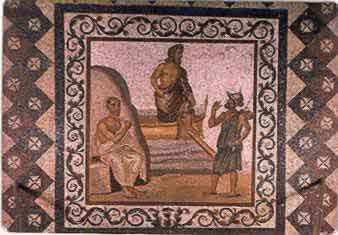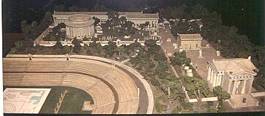Asclepios
8th Century BC

Asclepios was a physician who lived around the 8th century BC. He was mentioned in Homer’s Iliad and described as a man with extraordinary talents as a physician. Later, following his death, he became elevated to the status of god, because of his legendary healing abilities.
Asclepios, the god of healing, was worshipped by ancient Greeks when they were ill or wanted to have a loved one raised from the dead. He was said to have learned his herbal remedies from Chiron, the centaur. As the legend goes, Pluto, lord of the underworld killed Asclepios because he had brought back too many from the dead, a feat that went beyond his assigned powers.
Asclepius’s children were also associated with health. Machaon, his older son, was the god of surgery, and his younger son, Podalirios, was a god of medicine. Asclepios’s daughters, Hygeia, Panacea and Iaso were goddesses who also specialized in aspects of health and healing. Hygeia was the goddess of public health, Panacea was the goddess of therapy and Iaso was the goddess of cures, remedies and modes of healing.
The worship of Asclepios became established in Greece in the 3rd century BC. The Asclepiades was an ancient guild of doctors who were devotees of the god. By 200 BC every large town in Greece erected a temple to Asclepios where people could go to cure their ailments. The temples served religious as well as therapeutic purposes. They contained spas, overnight sleeping arrangements, and sites of entertainment, such as theatres. The most famous centre was at Epidaurus on the Peloponese in mainland Greece.
Pilgrims would spend the night in the temples, sleeping before an image of Asclepios. The pilgrim first made a request of the god, usually for a cure, and; while the pilgrim slept within the confines of the temple, probably aided by an opiate, the God would visit them in a dream. Non-poisonous sacred snakes thought to be healing serpents, would crawl on the floor around or over the sick person during the night. When the pilgrims awoke they would report their dream to a priest to have it interpreted. The priest would then recommend a treatment--often the priest would recommend a visit to baths or a gymnasium. Sometimes they would suggest changing one’s job, or diet changes. In some instances pilgrims would stay in the temple for many days before Asclepios would visit them in a dream.

A Model of the Asclepius Temple at Epidaurus

The caduceus, a symbol of medicine today, contains snakes that hark back to the days of Asclepios whose healing snakes were used to cure illnesses.
Asclepius heals a mute boy:
Inscriptiones Graecae 4.1.121-12: Stele 1.5
A voiceless boy. He came as a supplicant to the Temple for his voice. When he had performed the preliminary sacrifices and fulfilled the usual rites, thereupon the temple servant who brings in the fire for the god, looking at the boy’s father, demanded he should promise to bring within a year the thank-offering for the cure if he obtained that for which he had come. But the boy suddenly said, “I promise.” His father was startled at this and asked him to repeat it. The boy repeated the words and after that became well.
Writings on Asclepios and his followers
Patton, Kimberly (2009). Ancient Asklepieia: Institutional incubation and the hope of healing. In Stephen Aizenstat & Robert Bosnak (Eds.). Imagination and medicine: The future of healing in an age of neuroscience (pp. 3-34). New Orleans, LA: Spring Journal Books.
Wickkiser, Brownen Lara (2008). Asklepios, medicine, and the politics of healing in fifth-century Greece: Between craft and cult. Baltimore: Johns Hopkins.
